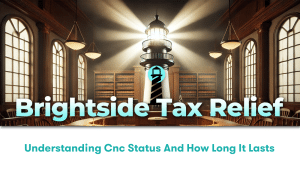Understanding the Concept of Trust Fund Penalty
For anyone who owns a business or is involved in payroll operations, understanding the concept of the Trust Fund Recovery Penalty (TFRP) is critical. Simply defined, the TFRP is a federal penalty imposed by the Internal Revenue Service (IRS) on individuals responsible for withholding and paying payroll taxes but fail in their duty. This penalty is also colloquially referred to as the “100% penalty,” due to the severity of its financial implications. As an essential part of your business operations, the IRS imposes severe penalties for failure to comply with payroll tax laws.
Entities Subject to Trust Fund Penalties
Primarily, the IRS targets businesses—irrespective of their size—for trust fund penalties. This includes corporations, partnerships, and limited liability companies (LLCs). However, individuals who are responsible for handling payroll taxes or hold a significant stake in business can also face the TFRP. This extends to officers, directors, shareholders, and even employees in positions of financial control.
Common Mistakes Leading to Trust Fund Penalties
While navigating the complex payroll tax landscape, several common mistakes can lead businesses and individuals into the dreaded trust fund penalty. These include:
– Casual approach to payroll tax deadlines
– Misapplying payroll tax funds
– Failure to deposit correct tax amounts
– Neglecting to file payroll tax returns
Real-Life Stories of Trust Fund Penalties
The IRS maintains a strict policy when it comes to trust fund penalties. For instance, in 2021, a restaurant owner in California faced the TFRP after his business failed to pay over $500,000 in payroll taxes to the IRS. The man had been deducting federal taxes from employees’ paychecks but failed to forward these monies to the IRS over three years. Switching the focus to Texas, a business owner faced the TFRP for failing to pay about $1 million in payroll taxes, which he later used for personal expenses.
Strategies to Avoid Trust Fund Penalties
It is crucial for businesses and individuals to implement strategies and practices that minimize the risk of trust fund penalties. Essential strategies include maintaining accurate records, staying current with payrolls’ tax laws, and promptly addressing any IRS notifications or queries.
Solutions for Trust Fund Penalty Cases
At Brightside Tax Relief LLC, we understand the gravity and implications of TFRP cases. We use a hands-on approach to help businesses and individuals resolve their trust fund penalties. As experts in the tax relief field, we advocate for the following solutions:
– Negotiate payment plans: We work with the IRS to formulate a feasible installment agreement that allows the affected party to pay their debt over a specified period.
– Offer in compromise (OIC): Under certain conditions, the IRS accepts less than the full amount owed in a program known as the OIC.
– Innocent spouse relief: In situations where applicable, we help prove that a spouse or former spouse should be solely responsible for the debt.
– Penalty abatement: The IRS may absolve a portion or all of the owed money if we can demonstrate reasonable cause for noncompliance.
For more information on understanding trust fund penalties, visit the IRS website.
Final Thoughts
Trust fund penalties can pose a significant burden to both businesses and individuals. However, with accurate knowledge of payroll tax laws, diligent practices, and strategic intervention from tax relief companies like Brightside Tax Relief LLC, you can navigate and mitigate trust fund penalty situations. Remember, when it comes to taxes, the best strategy is always prevention. Regular consultation with tax professionals can keep you in the clear and prevent the chaos and financial strain often associated with trust fund penalties.




